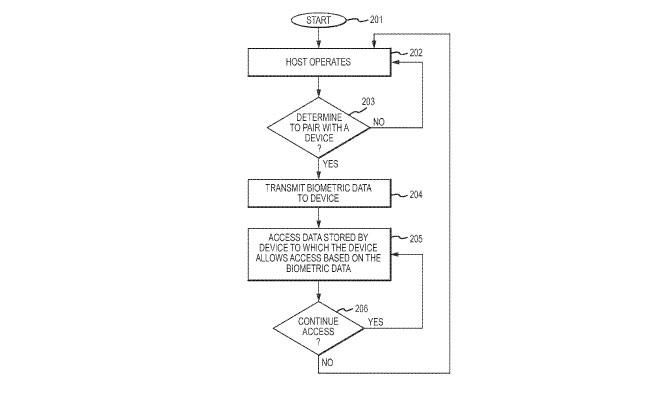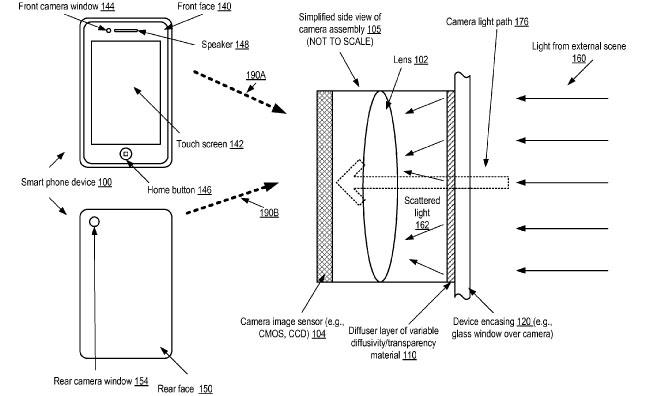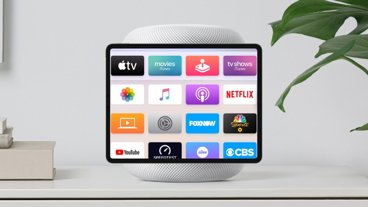A pair of newly released patent applications detail potential future capabilities for Apple devices, with the first detailing a system by which two devices could be paired using biometric information, like a fingerprint, while the second details a method to display camera information using electronic diffusers.
U.S. Patent Application number 20140068725, entitled "Wireless Pairing and Communication Between Devices Using Biometric Data," defines a manner in which users could take advantage of unique biometric information to authorize a connection between two devices. This could be used, for instance, in lieu of current authentication methods to pair two devices over Bluetooth.
Currently, authorizing a connection between two Bluetooth devices requires a user to enter a passcode, generally a randomly-generated series of numbers. Apple's patent would allow biometric information, like fingerprints from the company's popular Touch ID system, to substitute for those passcodes.
Apple's patent application, published on Thursday and discovered by AppleInsider, would also allow for the same biometric data to determine a specific level of access for paired devices. Pairing authorized by a fingerprint, for instance, may grant greater access than pairing authorized with a passcode.
Apple credits inventors Chang Zhang of San Jose, Calif. and Qing Liu of Mountain View, Calif. with the invention.
Meanwhile, U.S. Patent Application number 20140063049, entitled "Information Display Using Electronic Diffusers," defines a way in which optical diffusers located on top of a device's display or camera openings could be manipulated to display messages. The claim could enable several new features, mostly revolving around low-power message display.
In one instance, the diffusers could be manipulated to hide a device's camera from the user. Such a method could be useful as a low-power way to notify the user of the camera's activation state — if the camera is on, for example, it would be visible.
This would be useful, Apple says, to provide built-in privacy protection for users. Another embodiment would use the configurable diffusers to change the light level of built-in flash units based on the ambient lighting in the area.
Apple credits inventor Joel S. Armstrong-Muntner of San Mateo, Calif. with the invention.
 Shane Cole
Shane Cole







-m.jpg)






 Charles Martin
Charles Martin


 Wesley Hilliard
Wesley Hilliard
 Stephen Silver
Stephen Silver
 William Gallagher
William Gallagher

 Marko Zivkovic
Marko Zivkovic









11 Comments
Sounds utterly useless
Next!
[quote name="Emes" url="/t/162722/apple-exploring-device-pairing-with-touch-id-camera-privacy-using-diffusers#post_2482541"]Sounds utterly useless Next![/quote] How so? I've been wanting something like this since the iWatch rumours started. I want a BT-enabled wearable to automatically unlock my iPad, iPhone and Macs when I'm in range and then then lock them again when I'm not. This would also mean that if an iPhone gets stolen while in use it will be locked almost immediately as the thief leaves the range of wearable.
And this is impossible to accomplish without transmitting your biometric data over an unsecured Bluetooth connection?
[quote name="Emes" url="/t/162722/apple-exploring-device-pairing-with-touch-id-camera-privacy-using-diffusers#post_2482551"]And this is impossible to accomplish without transmitting your biometric data over an unsecured Bluetooth connection? [/quote] Are you asking a question or making a statement? Why would it be unsecured? Why would your biometric data need to be transmitted anywhere?
[quote name="SolipsismX" url="/t/162722/apple-exploring-device-pairing-with-touch-id-camera-privacy-using-diffusers#post_2482554"][quote name="Emes" url="/t/162722/apple-exploring-device-pairing-with-touch-id-camera-privacy-using-diffusers#post_2482551"]And this is impossible to accomplish without transmitting your biometric data over an unsecured Bluetooth connection? [/quote] Are you asking a question or making a statement? Why would it be unsecured? Why would your biometric data need to be transmitted anywhere?[/quote] Exactly! The biometric data would never be passed -- rather a token could be passed, in the clear, and it would only work with a given set of biometric data known to both device. Apple has related patents in this area to allow an iPhone to conduct a credit card transaction by passing a token instead of credit card data.